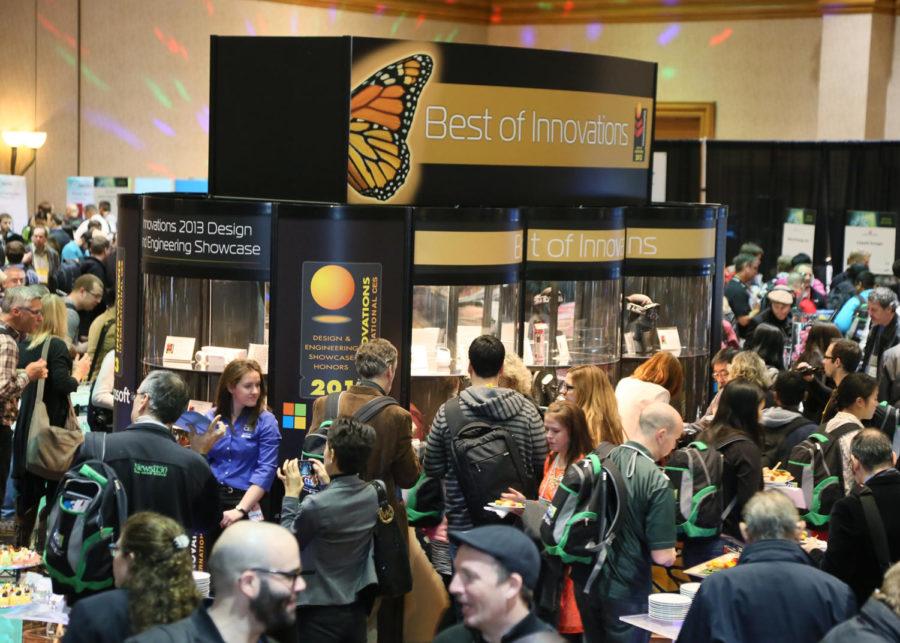CES 2013 reveals the future of technology
Members of the media enjoy a sneak peak at this year’s exhibitors at CES Unveiled, the official Press Event of the 2013 International CES. Photo courtesy of Consumer Electronics Association.
January 14, 2013
The International Consumer Electronics Show was held last week at the Las Vegas Convention Center. Following the tradition of debuting the technology of tomorrow, this year’s show saw both refined ideas and completely new ones during its four-day-long showcasing.
The International Consumer Electronics Show is an annual electronics and gadgetry trade show that companies and manufacturers from all over the world attend to announce, talk about and demo their newest products. Held at the Las Vegas Convention Center since 1978 and at various other cities before then, the Consumer Electronics Show is hosted every January by the Consumer Electronics Association.
Each day during the Consumer Electronics Show, exhibitors like Samsung, Sony and NVidia had scheduled time slots to show their upcoming products. Some of these companies also held their own keynotes at the show, which are comprised of a representative talking to an audience about a new product.
Allison Fried, manager of international communications at the Consumer Electronics Association, said that each show’s exhibitors are required to register at the preceding year’s show. Companies at this year’s Consumer Electronics Show went through a booth space selection process — where they meet with sales teams to look at floor spaces — for 2014’s show.
“We don’t have themes for each day, but we do kick things off the day before the show floor opens with [Consumer Electronics Show] Press Day,” said Fried. “Here, exhibitors will announce major product announcements during a day filled with back-to-back press conferences.”
Fried said that preparing for the show is entirely a year-long process. Before the Consumer Electronics Show of 2013 ended, planning teams already began working on next year’s show.
The Consumer Electronics Show is a place where companies can tell more about products that consumers already know about, but it is also an event that many save their newest debuts for. NVidia, a longtime producer of GPUs, or graphics cards, began their show with the announcement of their next generation of mobile processor called Tegra 4. As an upgrade to their older version, it was a reveal that many saw coming.
What was not expected, however, was an announcement that makes Consumer Electronics Show what it is; a show that can reveal mysteries or introduce entirely new ones. Upon conclusion of their Tegra 4 keynote, NVidia brought a product on stage that was kept under wraps until that very moment of the show; a device called Project SHIELD. This handheld system is the company’s first foray into gaming hardware other than computer cards and was responded to as such.
Categories were rarely dominated by just one brand at Consumer Electronics Show. For instance, NVidia saw competition with Qualcomm and their mobile processors. Ford’s “intuitive” MyLink systems in its cars were shown one day just as Lexus’ “automobile awareness” features were shown the next. Audi jumped into the Consumer Electronics Show as well, demonstrating their new tech that allows a car to park and drive itself, much like Lexus’ and Google’s attempts at autonomous driving.
TVs, tablets, computers and phones were all present at the show. Asus let people get their hands on their newest tablets like the dual-screen Taichi while phone maker Huawei showed off the world’s largest smartphone at 6.1 inches. Brands like Samsung and Sony were all about TVs and phones with Samsung touting its Galaxy Note II in competition with the new Sony Xperia. Sony stood out from the other 4K television brands by revealing the world’s first 4K OLED television, a screen that costs more than $30,000 and has four times the resolution of current 1080p displays.
Gaming, as evidenced by NVidia’s show, was emphasized greatly this year. Valve, the company responsible for the digital distribution service on the PC and Mac known as Steam, revealed their first home console meant for televisions. Razer, a gaming peripheral company, announced the Razer Edge, the world’s first tablet meant for gamers. (It features the specs of a high-end gaming PC inside the portability of a tablet.) The Edge went on to win CNET’s Best of Consumer Electronics Show award.
Consumer Electronics Show 2013 saw thousands of products and was covered by hundreds of media. The products shown could take anywhere from months ago to 10 years to be available for consumers, but even products that did not have a release date still gained attention and helped let the world know what we can expect from those who provide us with ever-evolving tech.







